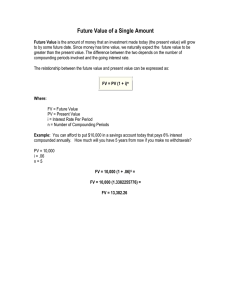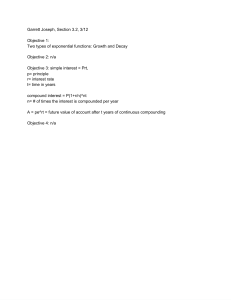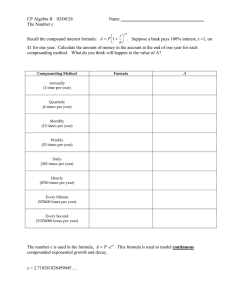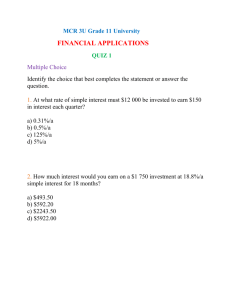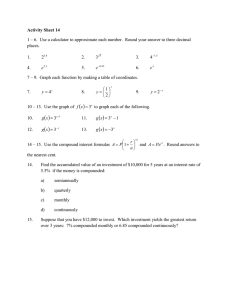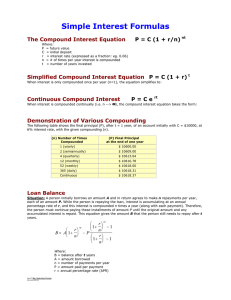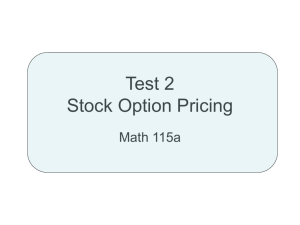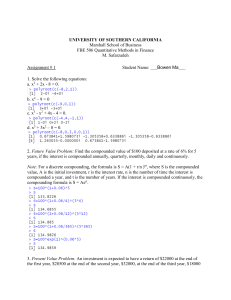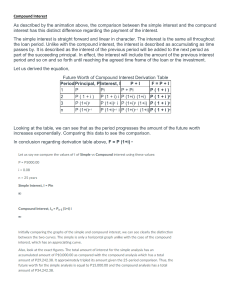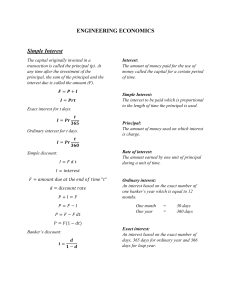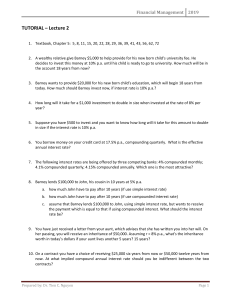Present Value of a Dollar
advertisement
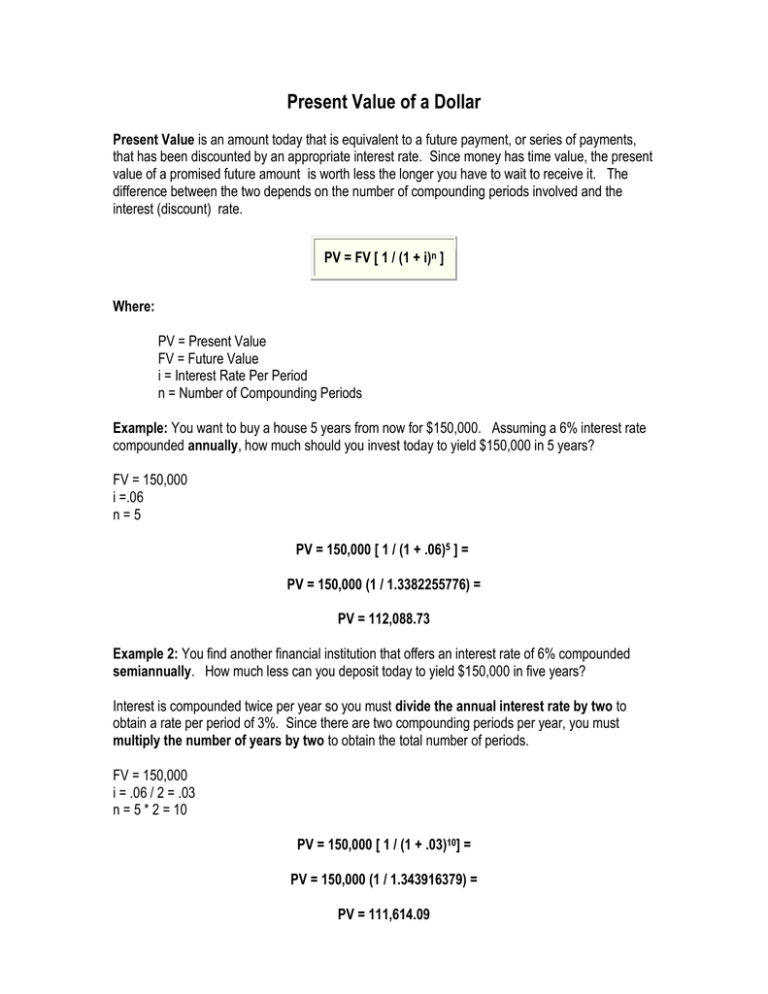
Present Value of a Dollar Present Value is an amount today that is equivalent to a future payment, or series of payments, that has been discounted by an appropriate interest rate. Since money has time value, the present value of a promised future amount is worth less the longer you have to wait to receive it. The difference between the two depends on the number of compounding periods involved and the interest (discount) rate. PV = FV [ 1 / (1 + i)n ] Where: PV = Present Value FV = Future Value i = Interest Rate Per Period n = Number of Compounding Periods Example: You want to buy a house 5 years from now for $150,000. Assuming a 6% interest rate compounded annually, how much should you invest today to yield $150,000 in 5 years? FV = 150,000 i =.06 n=5 PV = 150,000 [ 1 / (1 + .06)5 ] = PV = 150,000 (1 / 1.3382255776) = PV = 112,088.73 Example 2: You find another financial institution that offers an interest rate of 6% compounded semiannually. How much less can you deposit today to yield $150,000 in five years? Interest is compounded twice per year so you must divide the annual interest rate by two to obtain a rate per period of 3%. Since there are two compounding periods per year, you must multiply the number of years by two to obtain the total number of periods. FV = 150,000 i = .06 / 2 = .03 n = 5 * 2 = 10 PV = 150,000 [ 1 / (1 + .03)10] = PV = 150,000 (1 / 1.343916379) = PV = 111,614.09
